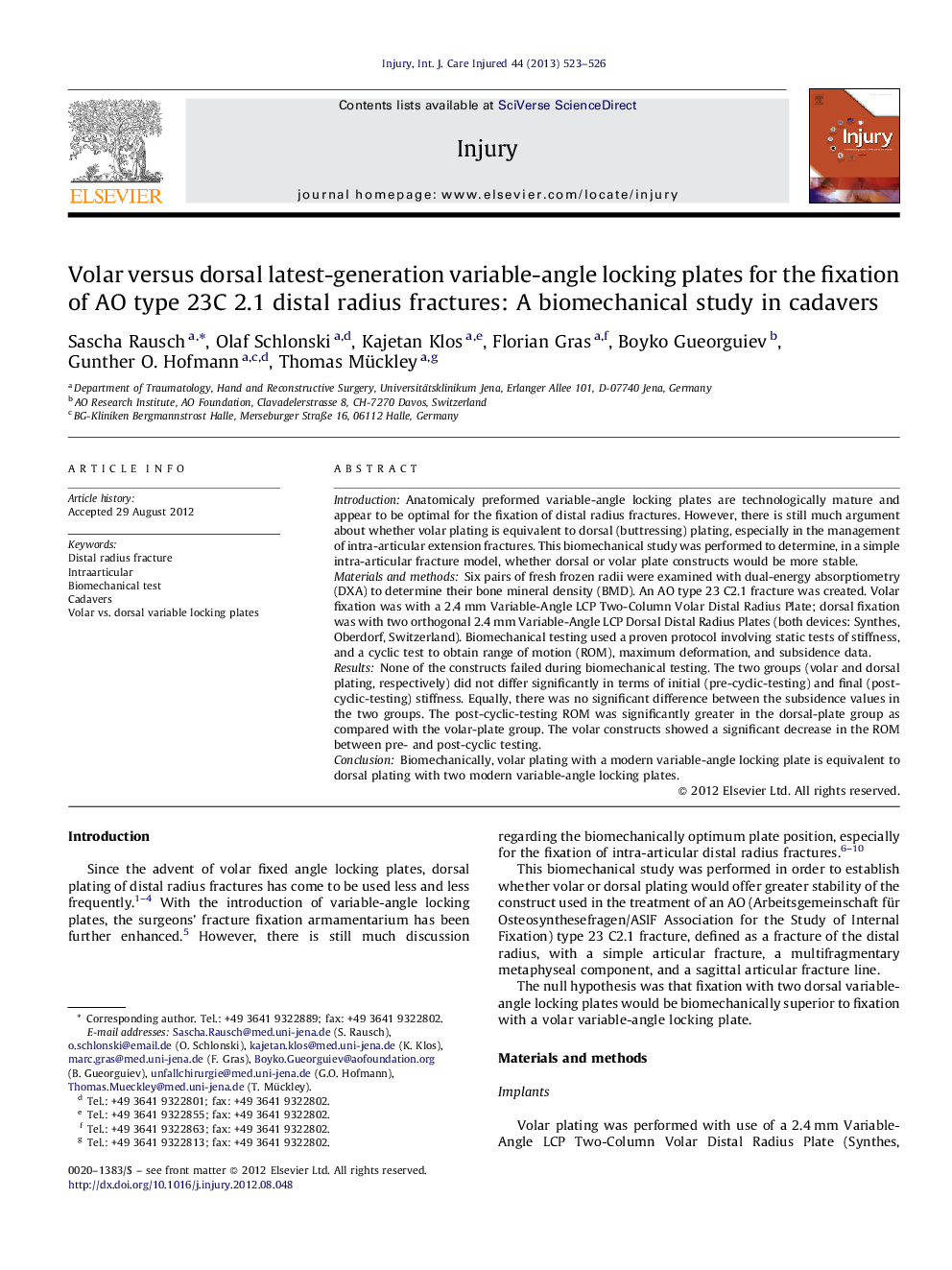| Article ID | Journal | Published Year | Pages | File Type |
|---|---|---|---|---|
| 3239455 | Injury | 2013 | 4 Pages |
IntroductionAnatomicaly preformed variable-angle locking plates are technologically mature and appear to be optimal for the fixation of distal radius fractures. However, there is still much argument about whether volar plating is equivalent to dorsal (buttressing) plating, especially in the management of intra-articular extension fractures. This biomechanical study was performed to determine, in a simple intra-articular fracture model, whether dorsal or volar plate constructs would be more stable.Materials and methodsSix pairs of fresh frozen radii were examined with dual-energy absorptiometry (DXA) to determine their bone mineral density (BMD). An AO type 23 C2.1 fracture was created. Volar fixation was with a 2.4 mm Variable-Angle LCP Two-Column Volar Distal Radius Plate; dorsal fixation was with two orthogonal 2.4 mm Variable-Angle LCP Dorsal Distal Radius Plates (both devices: Synthes, Oberdorf, Switzerland). Biomechanical testing used a proven protocol involving static tests of stiffness, and a cyclic test to obtain range of motion (ROM), maximum deformation, and subsidence data.ResultsNone of the constructs failed during biomechanical testing. The two groups (volar and dorsal plating, respectively) did not differ significantly in terms of initial (pre-cyclic-testing) and final (post-cyclic-testing) stiffness. Equally, there was no significant difference between the subsidence values in the two groups. The post-cyclic-testing ROM was significantly greater in the dorsal-plate group as compared with the volar-plate group. The volar constructs showed a significant decrease in the ROM between pre- and post-cyclic testing.ConclusionBiomechanically, volar plating with a modern variable-angle locking plate is equivalent to dorsal plating with two modern variable-angle locking plates.
